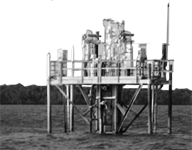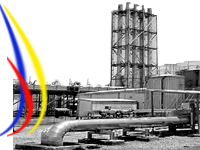Sourcerock Characteristcs:.
Oil prone source rocks have been identified in the Lower to Middle Jurassic Pindiro or Nondwa carbonate/evaporites, as shown in the Mandawa-7, Mbuo-1, and Mita Gamma-1 wells. They contain a rich mixture of Type I and III kerogen, with TOCs greater than 9%. The Permo-Triassic and possibly even some early Jurassic sediments are dominated by Type III kerogen, although rocks with TOC of 7% and a HI of 386 mgHC/g TOC occur in the Lukuledi-1 well, in the Ruvuma Basin. The section above the Middle Jurassic is typically dominated by Type III kerogen and is essentially gas prone. The Upper Cretaceous in Kimbiji East-1 contains TOCs up to 12%. Cretaceous and Tertiary source potential has also been speculated. Eocene lignites and organic rich shales are present in wells around the Songo Songo Gas Field. Occurrences of oil in a Songo Songo well and in the Pemba-5 well have been described in the section on Hydrocarbon Occurrences. Basin studies, chemical analysis and burial history and maturation modeling indicate that extensive hydrocarbon generating ?kitchens? are likely to occur within the basins. Hydrocarbons generated in the Karoo basins may have accumulated in reservoirs of the same age, or migrated into Lower Cretaceous sands. The regional Upper Cretaceous shales of the Ruaruke hydrocarbons generated in the Lower Cretaceous shales in the distal (offshore) areas could be expected to migrate laterally and updip into the younger Cretaceous and Tertiary sequences. The Interior Basins contain Lacustrine Karoo sediments (4 to 5% TOC), with 30% Type I and II kerogen. The Tertiary Lake Bed Formation contains up to 4.9% TOC, consisting of Type I and II kerogen.

